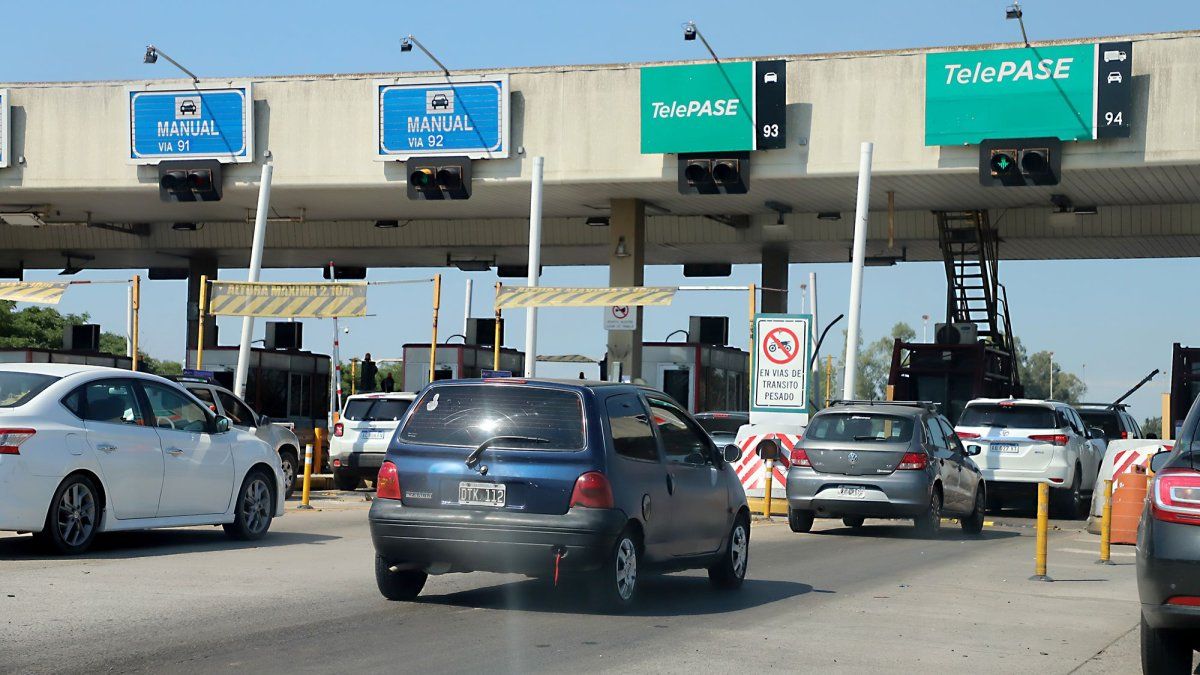The government advances in an ambitious plan to modernize the road system: Eliminate collection cabins and give way to a toll scheme without barriers, based on automatic identification technology.
The initiative, announced by the presidential spokesman Manuel Adornienroll in the deregulation plan promoted by the minister Federico Sturzenegger. The proposal not only seeks to expedite traffic and eliminate bottles, but also allow greater participation of the private sector in the management of national corridors.
How will the new toll system work
The model proposed by the Executive is similar to the one that already operates in Uruguay And on some highways of the City of Buenos Aires. Instead of stopping in a cabin, Each vehicle will have an electronic identifier linked to a means of payment, allowing an automatic collection while circulating.
“It is a paradigm shift: technology replaces bureaucracy and optimizes travel times,” official sources explain. LTo eliminate traditional tolls, it could mean the end of bottles at peak times and reduce pollution caused by cars stopped with the engine on.
Tolls tolls TV -ROAD ROADERS INCREASE AUSA AUBASA
Instead of stopping in a cabin, each vehicle will have an electronic identifier linked to a means of payment, allowing an automatic collection while circulating.
Mariano Fuchila
However, the plan is not exempt from challenges. The road infrastructure will need adaptations and, above all, a significant investment to ensure that the system works without failures. An exact implementation date has not yet been defined, but the Government seeks to accelerate the deadlines to advance the first tests.
The role of the private sector and the impact on workers
Beyond the technological advance, the reform opens another debate: the future of road concessions. Currently, more than 6,000 kilometers of national routes are under the administration of the state company Road Corridors, but the new policy aims to privatize part of the system.
According to the Executive, Allow private companies to manage runners will facilitate investments in maintenance and infrastructure improvements. However, the measure could bring an adjustment in toll rates, something that worries the usual drivers.
Another unsolved topic is the impact on employment. The elimination of toll booths will directly affect hundreds of workers who operate today in these collection points. In some regions, such as Santa Fe, claims have already emerged for possible layoffs, especially in sections where the concessions are close to overcome.
Beyond toll: the future of mobility in Argentina
The road modernization plan is not limited to tolls. In parallel, The City of Buenos Aires advances in complementary measures, such as the exemption of payment for electric and hybrid vehicles, a strategy to promote the use of less polluting cars.
Meanwhile, on national routes, drivers continue to pass under the toll structures, not knowing if in a few months everything will change. The decree that will define the new system is on its way, but its success will depend on the implementation capacity and response of the provinces, which will have the last word about their adhesion.
The future of the Argentine routes seems to take a new course, one where the barrier no longer goes down, where the paper coins and tickets remain in the memory, and where the time on the route depends more on the speed of the trip than of the stops Obligated.
Source: Ambito
I’m a recent graduate of the University of Missouri with a degree in journalism. I started working as a news reporter for 24 Hours World about two years ago, and I’ve been writing articles ever since. My main focus is automotive news, but I’ve also written about politics, lifestyle, and entertainment.




